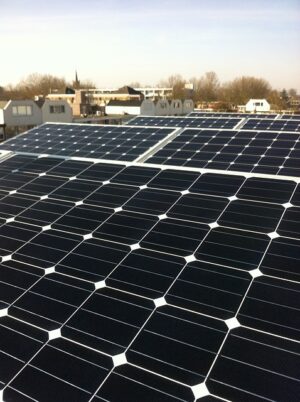Perovskite and bifacial solar technologies are at the forefront of a solar power revolution. Perovskite panels boast advanced properties, including high efficiency in harnessing a broad spectrum of sunlight, and can be manufactured using cost-effective solution-based methods that are more scalable than traditional silicon solar cells. Their flexibility and lightweight design enable innovative applications beyond the limitations of rigid silicon panels. Bifacial solar panels, another significant advancement, increase efficiency by capturing sunlight from both sides, significantly enhancing energy production, particularly in environments with high albedo like snow or concrete. This dual-sided functionality is beneficial for various settings, including residential rooftops and large-scale solar farms, and is expected to significantly boost overall energy yield. Both perovskite and bifacial technologies are set to transform the landscape of solar power installations, making them more efficient and productive, and reinforcing their role as sustainable and scalable renewable energy solutions in our transition towards a greener future.
2023 heralds a new era in solar power technology, with groundbreaking innovations transforming the landscape of renewable energy. This article explores seven pivotal advancements that are set to revolutionize how we harness solar energy. From perovskite solar panels offering unprecedented efficiency to transparent options that blend seamlessly into our daily lives, these technologies promise a future where sustainable power is both effective and aesthetically pleasing. We’ll dive into the potential of floating solar farms, the versatility of building-integrated photovoltaics, and the transformative power of solar panel shingles. Additionally, we’ll address the critical role of recycling and upcycling in maintaining the sustainability of solar energy, ensuring a circular economy that supports our planet’s health. Join us as we unveil the top innovations in solar panel technology that are poised to reshape our world with clean, renewable power.
- Perovskite Solar Panels: The Game-Changers of Solar Power
- Bifacial Solar Panels: Harnessing Both Sides for Maximum Efficiency
Perovskite Solar Panels: The Game-Changers of Solar Power

Perovskite solar panels represent a significant leap forward in solar power technology, offering promising prospects for more efficient and cost-effective energy generation. These innovative panels are based on perovskite crystalline materials that exhibit exceptional optoelectronic properties, making them highly sensitive to sunlight across a broad spectrum. Unlike traditional silicon-based solar cells, perovskite solar panels can be fabricated using simple solutions in a process akin to printing, which significantly lowers manufacturing costs and opens up new possibilities for scalability. Moreover, their ability to convert solar energy into electricity with higher efficiencies, even surpassing that of conventional silicon panels in some cases, positions perovskite solar cells as a leading contender in the renewable energy sector. The integration of these materials into flexible and lightweight substrates further enhances their versatility, enabling applications in a variety of settings where traditional solar panels would be impractical. As research continues to advance, perovskite solar panels are poised to reshape the landscape of solar power, making clean and sustainable energy more accessible than ever before. Their potential to revolutionize how we harness solar energy cannot be overstated, as they bring us closer to a future where solar power is ubiquitous and an integral part of our global energy infrastructure.
Bifacial Solar Panels: Harnessing Both Sides for Maximum Efficiency

Bifacial solar panels represent a significant leap forward in the realm of solar power efficiency. Traditional single-side solar panels absorb sunlight primarily from their front side, but bifacial panels are designed to capture solar energy from both sides, thus harnessing a larger portion of the available sunlight. This innovation significantly increases the energy yield per panel, especially when installed on reflective surfaces or tilted towards the sun. The top surface captures direct sunlight, while the bottom surface collects diffused light, which is particularly beneficial in environments with high albedo—areas with reflective surfaces like snow or concrete. As a result, bifacial solar panels can generate more electricity over the course of a day compared to their traditional counterparts, making them an attractive option for maximizing output in various applications, from residential rooftops to large-scale solar farms. The integration of bifacial technology is set to enhance the efficiency and productivity of solar power installations globally, contributing to the scalability and sustainability of solar energy as a leading source of renewable energy.
2023 marks a pivotal year in solar power innovation, showcasing significant advancements that promise to reshape our approach to renewable energy. The introduction of Perovskite Solar Panels has emerged as a game-changer, offering unprecedented efficiency and scalability, which are set to revolutionize the industry. Meanwhile, Bifacial Solar Panels represent a leap forward in harnessing solar energy, maximizing energy production from both sides of the panel. As these technologies mature and scale, they will undoubtedly contribute to a sustainable future, making solar power an increasingly viable option for homes and businesses alike. The potential for these innovations to transform energy landscapes is immense, and their integration into our energy systems will be a critical step towards a greener planet.
